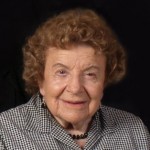Dr. Emanuele Petruzzella
epetruzz@emich.edu
Postdoctoral Researcher Scholar, Chemistry Department, Eastern Michigan University 09/26/2014 – 3:00 pm – Room 101, Chemical Sciences and Engineering Bldg
Abstract:
The antitumor activity of kiteplatin was reported for the first time twenty years ago. Recently, kiteplatin was investigated as potential antitumor drugs for the treatment of cisplatin- and oxaliplatin-resistant tumors.
Resistance to Pt-based antitumor drugs can involve different processes, such as the binding of S-donor biomolecules, like glutathione, cysteine and methionine, to the Pt metal center. This interaction prevents Pt drugs to react with DNA, i.e. the event triggering the antitumor effect. Kiteplatin showed an unique reactivity with these S-donors biomolecules and, for the first time, it was found that, also after reaction with glutathione, kiteplatin is still able to react with a DNA model. This unique behaviour could explain the activity of kiteplatin in cisplatin- and oxaliplatin-resistant tumors.
In recent years, several research groups investigated Pt(IV) derivatives of Pt-based anticancer drugs as pro-drugs for oral administration. The axial dihydroxido Pt(IV) derivative of kiteplatin undergoes a spontaneous thermal- and/or photoinduced reduction process. This Pt(IV) complex can be suitable for photo-therapy.



